Hi, every one, I have a problem with this finish and am hung up for an answer to remedy this for almost more than a month. I have taken this bowl to the local club and called and talked to some of my friends whom I respect their knowledge n our trade. they could not render any tips that would remedy the problem.
Here is the situation I have used this produst in the past with good success and did not have any problems with it bloching. However, this time using it on the Walnut that came form CA and I have all the frieves one can take, with it.
Notes, I contacted the Rustoleum and they did not give any help. So, I am hoping some out tere tried this product and can give some tips.
Please note that I have tried spot sandig where it did not take the finish and went down from 180 grit to 400 grit, and tried to apply it little thicker to have wood take the finish, but to no avail. I have wet sanded at one stage with mineral spirit (as it states on the can for cleaning), no satisfactory result. I have applied DNA and that didn't help either. Applied acetone as Rustoleum rep told me so.
The only thing I am suspicious of is that since Walnut is an oily wood and I am not sure if I cleaned out with DNA. And, also, the can says to apply it to raw wood which I think in this case it was a mistake doing so, since Walnut is open grain wood and the end grain is much porous.
I am trying to not resort to putting it back on glue block and sanding the whole thing to bare wood which is not going to be that easy and then start the finish all over again.
I appreciate any help.
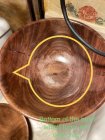
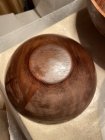
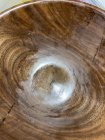
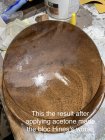
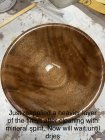
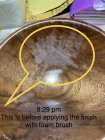
Here is the situation I have used this produst in the past with good success and did not have any problems with it bloching. However, this time using it on the Walnut that came form CA and I have all the frieves one can take, with it.
Notes, I contacted the Rustoleum and they did not give any help. So, I am hoping some out tere tried this product and can give some tips.
Please note that I have tried spot sandig where it did not take the finish and went down from 180 grit to 400 grit, and tried to apply it little thicker to have wood take the finish, but to no avail. I have wet sanded at one stage with mineral spirit (as it states on the can for cleaning), no satisfactory result. I have applied DNA and that didn't help either. Applied acetone as Rustoleum rep told me so.
The only thing I am suspicious of is that since Walnut is an oily wood and I am not sure if I cleaned out with DNA. And, also, the can says to apply it to raw wood which I think in this case it was a mistake doing so, since Walnut is open grain wood and the end grain is much porous.
I am trying to not resort to putting it back on glue block and sanding the whole thing to bare wood which is not going to be that easy and then start the finish all over again.
I appreciate any help.






Last edited by a moderator:
